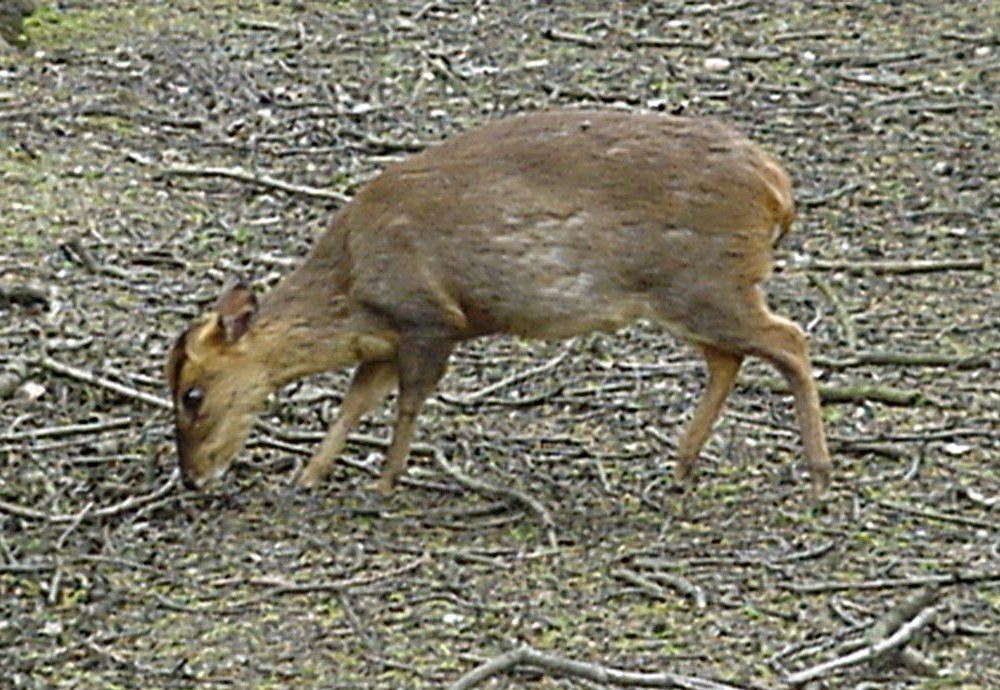Reeves’ (or Chinese) muntjac

Status
Non-native and locally common
Population
52,000
Scientific name
Muntiacus reevesi
Muntjac deer are the smallest deer in Britain, about the size of a labrador dog. They originated in southeast China and were brought to Woburn Park in Bedfordshire, by John Russell Reeves in 1838. During the 1920s, some individuals escaped and muntjac are now established in the wild. They have a deep reddish-brown glossy coat. When they are alarmed, they raise their distinctive long, dark tail to reveal the white patch underneath. Males and females can be distinguished by the dark markings on their face. Both sexes also have conspicuous dark pouches beneath their eyes, which are scent glands and used to communicate with each other. Males have short, straight, antlers, which point backwards and which are cast in May and June and subsequently re-grow by the autumn. Males also have large canine teeth, which extend beyond their upper lip and are used when fighting other males. They are usually solitary, secretive animals, mainly active at night.
Shoulder height: 45 – 52cm
Weight: 12 – 15kg
Lifespan: Up to 19 years
Reproduction
Mating occurs at any time of year and females give birth to a single spotted fawn after a gestation of seven months. Fawns seem to survive even when they are born in harsh winter weather.
Diet
Leaves, buds, honeysuckle, hogweed, berries, acorns, chestnuts, seeds, bark and grasses.
Habitat
Dense woodland with low areas of shrub; occasionally large gardens or small woodland copses.
Predators
Sometimes foxes and occasionally dogs.
Threats
Road traffic accidents; hunting; and severe winters.
Status & conservation
Non-native and locally common.
Population size & distribution
GB population 52,000 (almost all in England; several hundred in Wales and fewer than 100 in Scotland). The population has increased continually over the last 25 years. In England, they have spread northward as far as Cheshire and Derbyshire. They are absent from Ireland.
Did you know?
Muntjac often communicate by making remarkably loud barking sounds for 20 minutes or more at a time and are consequently known as ‘barking deer’.
